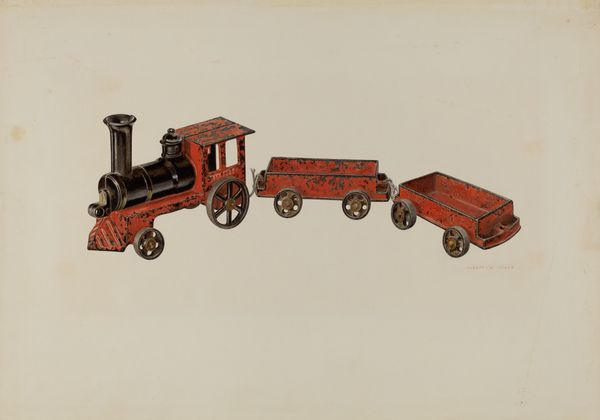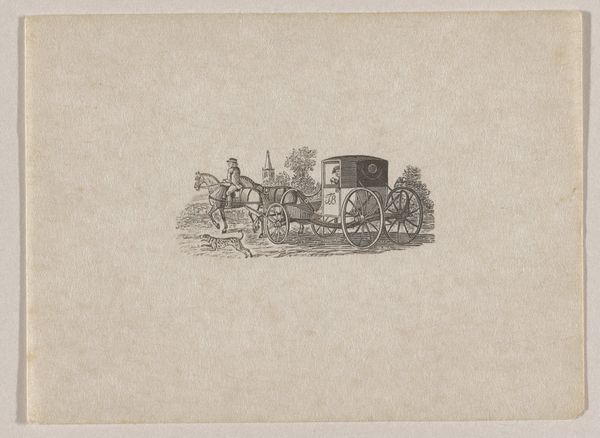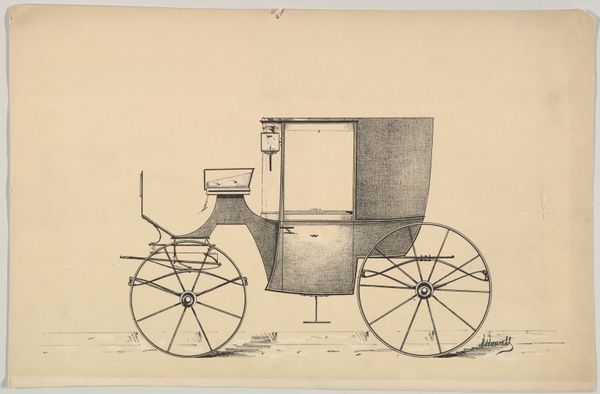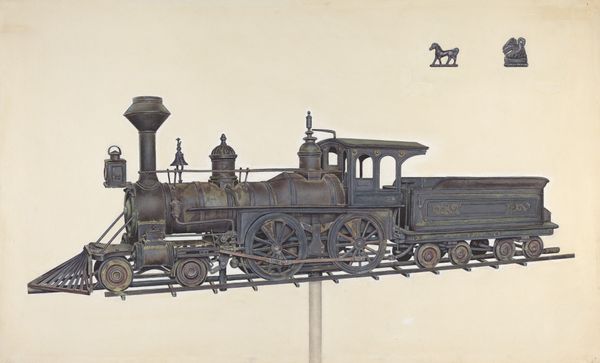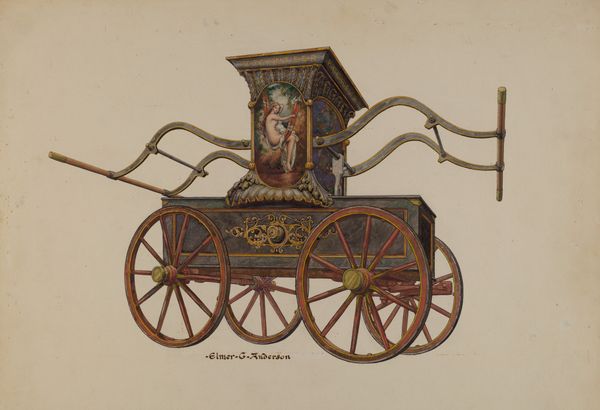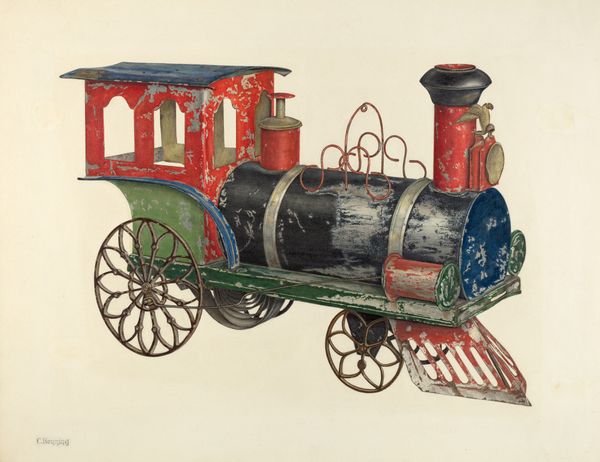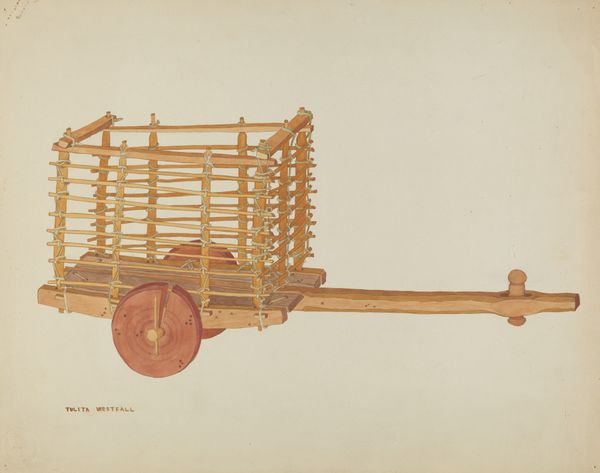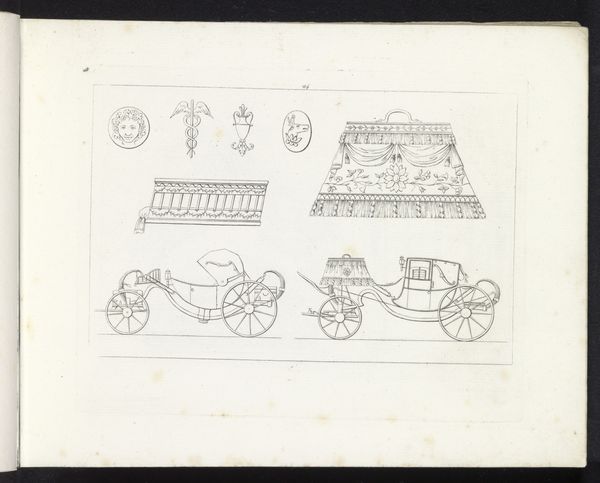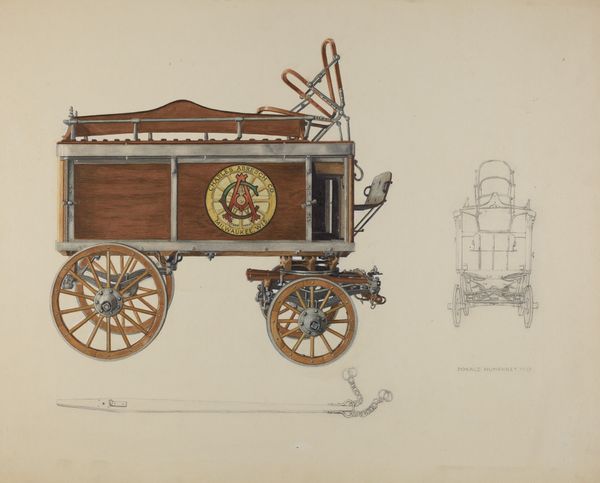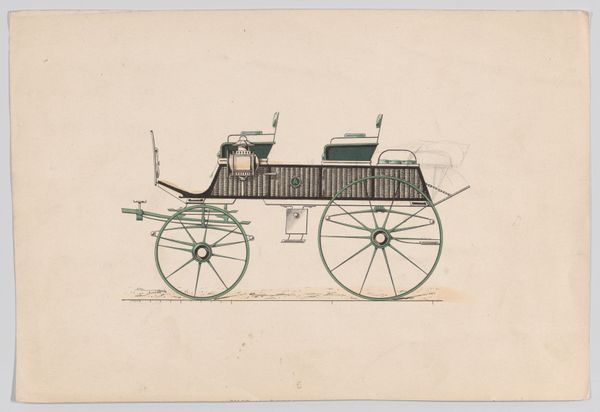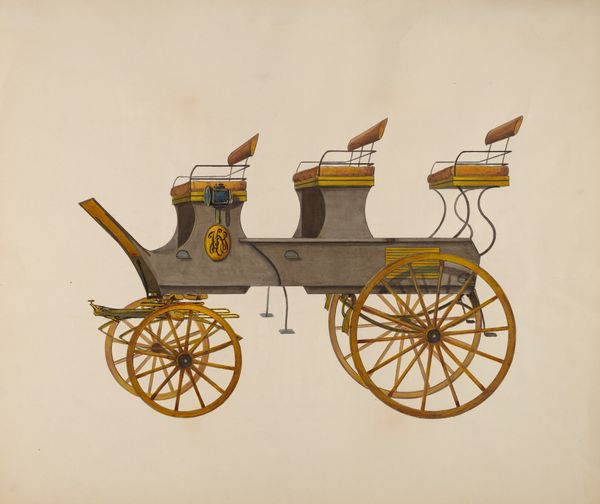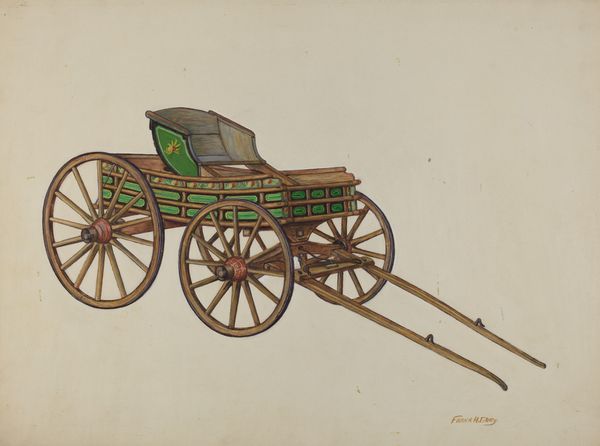
drawing, watercolor
#
drawing
#
charcoal drawing
#
watercolor
#
watercolour illustration
Dimensions: overall: 31.4 x 43.8 cm (12 3/8 x 17 1/4 in.) Original IAD Object: 5 1/2" long; 3" high
Copyright: National Gallery of Art: CC0 1.0
Editor: Here we have George File’s “Toy Train,” created sometime between 1935 and 1942, using watercolor and charcoal. I'm immediately struck by the delicate lines and how the artist has managed to create such a detailed representation of a toy. How would you interpret this work? Curator: The work commands attention primarily through its meticulous detail and carefully balanced composition. Consider the placement of each carriage: they are presented almost as discrete studies, unified through a common horizontal axis and rendered with considerable technical skill using both watercolor and charcoal. What do you observe in the articulation of each individual component of the train? Editor: I see variations in texture and tone that suggests each part is made of different materials. The carriage at the back looks older, heavier, almost worn. Curator: Precisely. File's technique enables us to see, or rather to intuit, these qualities. Furthermore, notice how the light falls across the objects, defining form through shadow and subtle tonal shifts. The neutrality of the background forces a concentration on the forms themselves, bringing out a heightened awareness of their individual characteristics and their unified arrangement. Do you find the artist made any choices in the palette? Editor: Yes, I see primarily muted, earthy colors - browns, yellows, grays - except a flash of red on the train. It brings a little bit of life to it. Is it deliberate? Curator: The restricted palette is crucial. These hues evoke a sense of nostalgia but, importantly, this artistic decision serves to unify the composition, and allows the artist to foreground other formal elements. This isn't about straightforward depiction; it's a meditation on form, texture, and composition. Editor: That’s interesting; I hadn’t thought about it that way. I was focused on the object, but it makes sense to think about how the artist wanted me to see the form, not just the subject. Curator: Precisely. Ultimately, the artist manipulates our attention and prompts us to reflect on the very nature of seeing and representation.
Comments
No comments
Be the first to comment and join the conversation on the ultimate creative platform.
